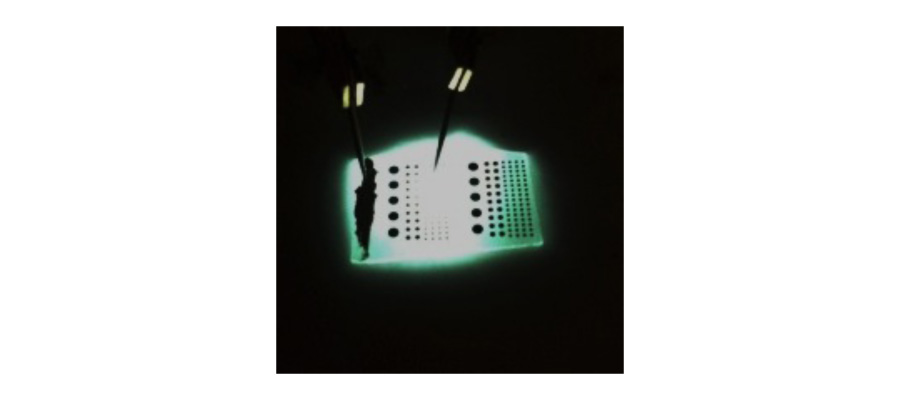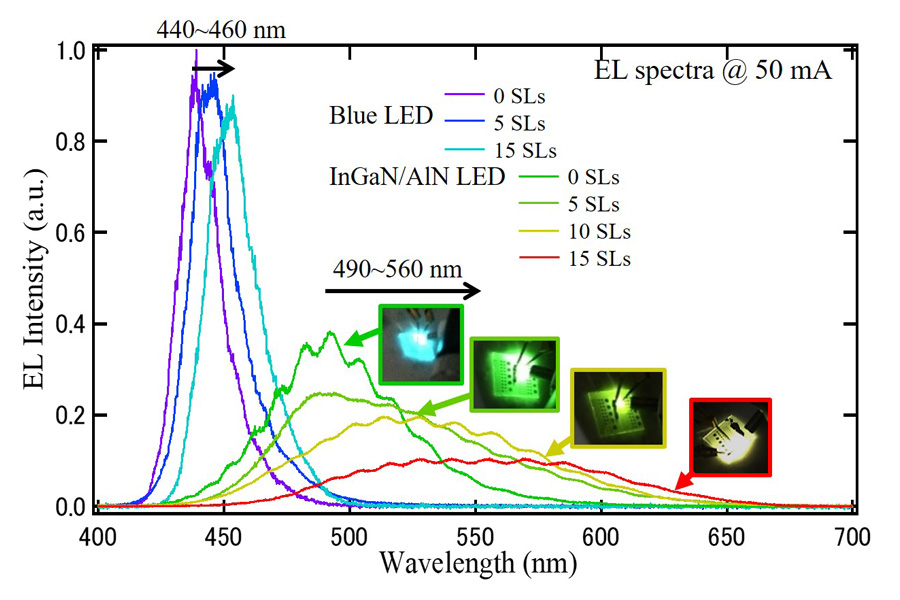■ Example of research topics ■
[ Solar ]
1. 4 junction by wafer bonding /
2. High-speed MOVPE /
3. EL and PL characterization /
4. Thin-film multi-junction (design and light trapping) /
5. 1.15 eV middle cell with MQWs /
6. Theoretical modeling of MQWs (quasi bulk approach and cell design) /
7. WoW /
8. ELO /
9. Dilute nitride MQW
[ Growth ]
1. III-V on Si photo detector /
2. III-V on Si solar cell
[ LED ]
1. Chip-white LED
[ Solar Fuel ]
1. CPV + water electrolysis /
2. CO2 reduction /
3. Semiconductor/electrolyte interface /
4. Polarization-controlled nitride photocathode /
5. Design of energy management system using hydrogen-based power storage
[ Quantum Modeling ]
1. Quantum modeling of insulators
Phosphor-free chip-white LED using InGaN/nano-AlN emitter
M. Sugiyama
III-V Nitrides are now extensively used for solid state lighting. Conventional white LEDs use phosphor to convert blue or ultraviolet emission to white light which causes energy losses and necessitates extra process step in the fabrication. Therefore, there is a huge demand for an LED which can emit light with broadband spectrum for white lighting without phosphor.
We have discovered that InGaN grown on low-temperature AlN with nano-textured surface can emit light with broadband spectrum covering the wavelength range from green to yellow, even under high current density. By combining this structure with blue-light emitting layers, a white LED can be obtained on one chip by a single-step growth without using phosphors. Since the fabrication process is the same as conventional blue LEDs except for the additional growth step of InGaN/nano-AlN layers, such a chip-white LED is an attractive candidate for the next-generation lighting.
A major challenge in this technology is making the emission spectrum broad in the visible wavelength range while keeping its emission intensity. This challenge necessitates deeper understanding on the mechanism of the broad-band emission from InGaN. Comprehensive analysis on the photoluminescence and electroluminescence under a wide temperature range gives us a lot of hint on the broadband luminescence mechanism. The key to the better control of the spectrum seems to exist in both the surface texture and the stress of the low-temperature-grown AlN beneath InGaN.

Fig. 1 Electroluminescence from a phosphor-free white LED.

Fig. 2 Electroluminescence spectra for both InGaN quantum wells and InGaN/nano-AlN emitter with varied period of InGaN/GaN superlattice inserted beneath the emitter.